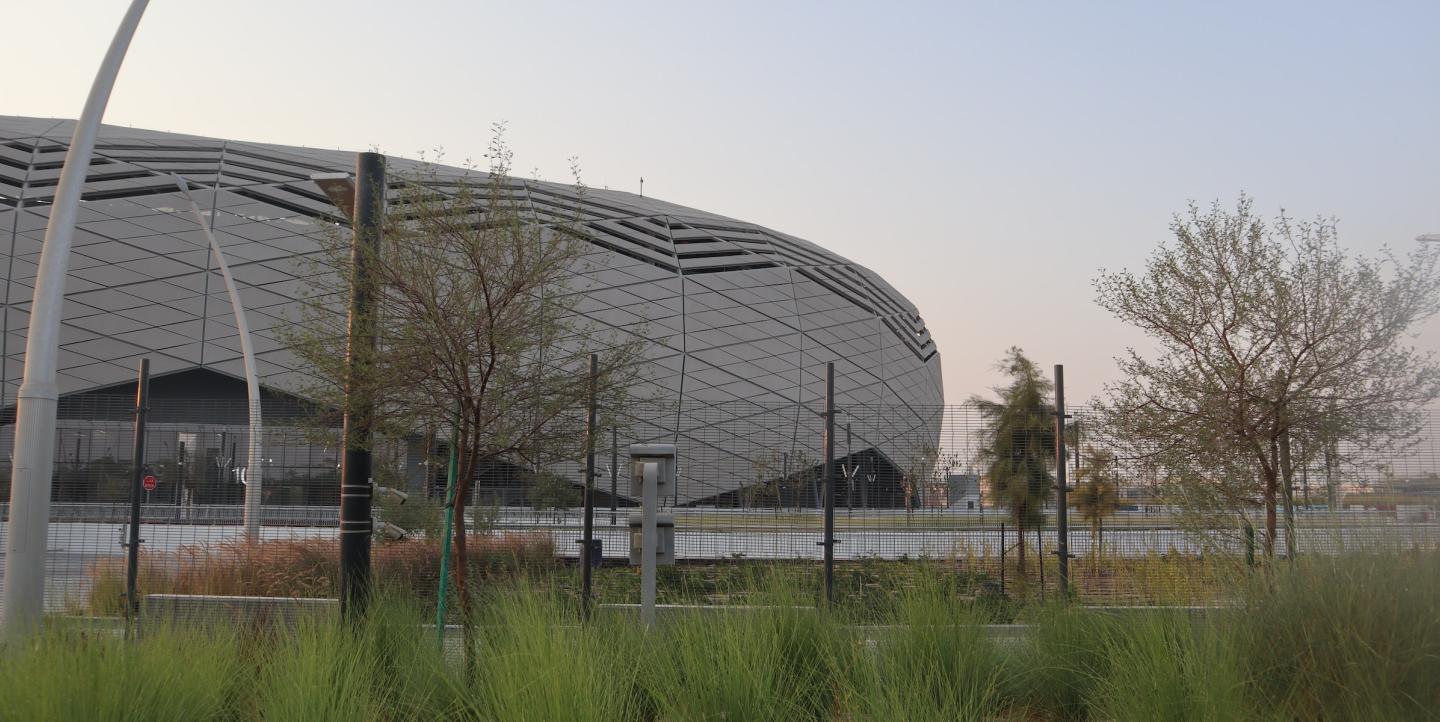For the next month, much of the world's attention will be focused on Qatar, for the 2022 FIFA Men's World Cup. Covering such a major event can be exciting — and not just for sports journalists.
With an international competition of this prominence, media coverage always goes beyond the actual games being played. Here are some pointers to keep in mind for journalists reporting on the World Cup.
Costs and logistics
Covering the events in Qatar presents financial and logistical challenges to consider. Travel to Qatar may include hours of flying time depending on one’s point of departure. Airfare may be expensive, as is lodging once in the country. Not to mention the cost of food.
For independent and larger media outlets alike, expenses will determine the number of reporters who travel, and how many opt for remote coverage.
Analytical coverage
Keish Gómez, a digital editor for ESPN Costa Rica, has prepared for several months to cover the World Cup remotely.
"I started planning for the World Cup three months ago. I organized interviews with major international players from each team in Costa Rica's group in order to have pre-World Cup content," said Gómez. He cautioned that getting statements from some sources can be difficult as many former soccer players only give interviews if they are paid to do so.
Costa Rica’s national team is in a group with Germany, Spain and Japan. Gómez sought out interviews with players from those countries, as well, to get their perspectives and analysis ahead of the tournament’s start.
"In terms of digital coverage, the issue of the interview fees the players ask for is important,” Gómez said. “Michael Ballack is asking for US$300. Casillas is asking for a donation of at least US$1,000 to his foundation. My organization doesn’t pay for interviews; it is important for journalists to know that they may encounter these types of asks from players.”
Reporters covering the World Cup from abroad should be mindful not to simply “cut and paste” information they receive from colleagues in the country, advised sports journalist Vanessa Riche. "It’s one thing to publish coverage based on our opinions, and it’s another to produce content solely based on what we are seeing on TV,” she said.
Journalists reporting remotely won’t as readily be able to capture important details around the matches taking place, either. “Being remote, you don't feel the atmosphere, and you can’t analyze the energy and the behavior of the fans, so we’ll have to work with a lot of discretion," continued Riche. "It has to be analytical coverage. Gather information from various sources, and look at a wide variety of content being published by different media outlets. With that, you’ll be able to have a wider perspective that will make more sense because it is more nuanced.”
Official sources
It's important to seek out information from official sources. The Brazilian Football Confederation (CBF), for instance, will offer updates on its website, in addition to publishing posts on social media. It’s taking this approach so that information is shared with all journalists, explained Vinicius Rodrigues, press officer for the Brazilian national team: "There is no exclusive content for anyone. We believe that this way all journalists are treated equally by our organization."
There is an exclusive section of the CBF website dedicated to statistics on the Brazilian national team, as well. CBF also makes visuals available to the press on Flickr. Photos and video content can be used as long as there is proper attribution to the official CBF photographer. CBF will also air replays of matches on YouTube.
Content from FIFA
For content around press conferences, as well as photos, videos and official World Cup reports, journalists can visit the FIFA Media Hub.
Reporters will need to register to access the resource; for any questions, contact MediaOperations@fifa.org. Certain information of interest to the press is only available on the Media Hub, instead of the official FIFA website open to the general public.
Social media
Twitter is among the social media platforms that journalists should monitor for World Cup updates. Consider creating Twitter lists with the official accounts of the soccer federations relevant to your coverage, players and prominent figures in the soccer world, and journalists who will be in Qatar, among others. You can refer to your lists also to follow media organizations in real time, which will help you verify and compare information.
When using platforms like YouTube, subscribe to relevant channels and activate the notifications to see new posts and updates. Here is the link to FIFA’s official YouTube account. FIFA also has accounts on Tiktok and Instagram you can visit to cross-reference information.
The following are the Twitter accounts for the North American and Latin American countries competing in the World Cup:
- Asociación de Fútbol Argentino (Argentina)
- Federación Ecuatoriana de Fútbol (Ecuador)
- Federación Mexicana de Fútbol (Mexico)
- Federación Costarricense de Fútbol (Costa Rica)
- Asociación Uruguaya de Fútbol (Uruguay)
- CBF Futebol (Brazil)
- Canada Soccer
- U.S. Men's National Soccer Team
Main image by Hatem Boukhit on Unsplash.
This article was originally published by IJNet in Spanish. It was translated to English by journalist Natalie Van Hoozer. Elements of the article have been pulled from this resource on our Portuguese site.


